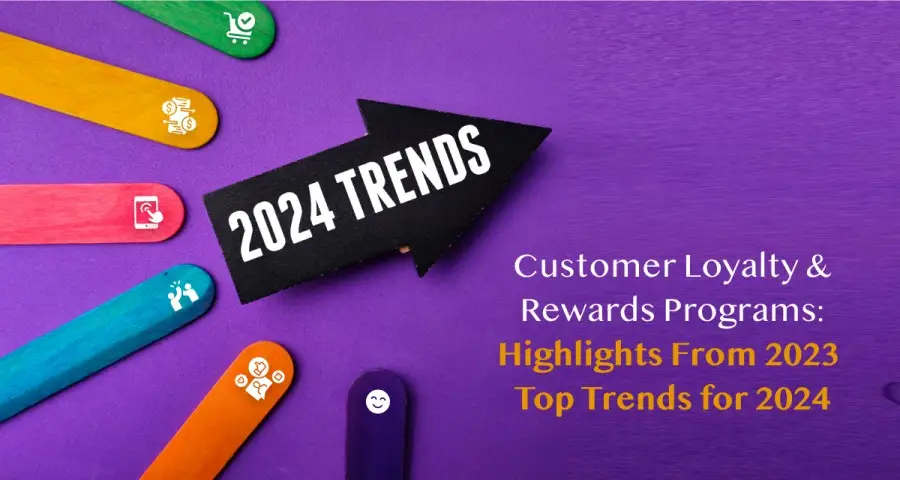While products and services have been at the forefront of customer satisfaction, the rewards system and loyalty program now hold an important place as well. The loyalty program trends previously revolved around offering bonus points; today, people are looking for better benefits and features. Right from getting personalized recommendations to added offers and discounts, all are setting up the trend for the years to come.
The loyalty management market as of 2023 is worth USD 10.2 billion and will reach USD 22.8 billion by 2028, as per the Markets and Markets report. Also, around 69% of brands have increased loyalty investment over the past two years, as per BusinessWire.
Hence, understanding customer loyalty trends and rewards programs is quite crucial. To understand this better, let us start by exploring the trends in customer loyalty programs until 2023. Moreover, let us explore loyalty programs in 2024, that are going to exist and some of the notable brands that have implemented revolutionary loyalty programs. So, let us get started here.
Loyalty Programs Highlights and Trends:
- Highlights From 2023 and Examples
- Impact of Customer Experience
- Impact of Ethical Considerations
- Impact of Social Media
- Top Loyalty Trends for 2024
- Innovative Loyalty Programs 2023
- Conclusion
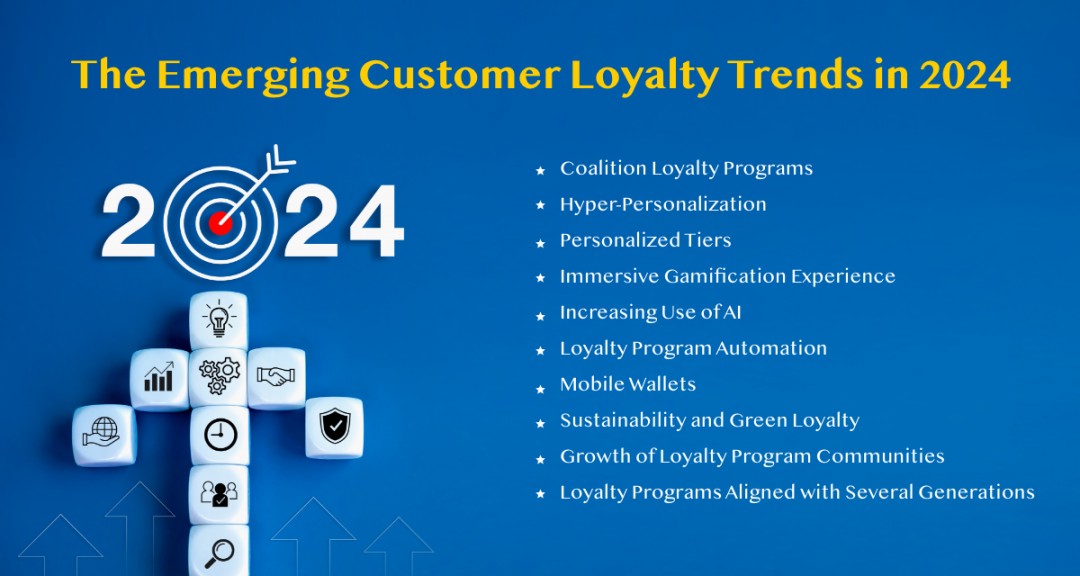
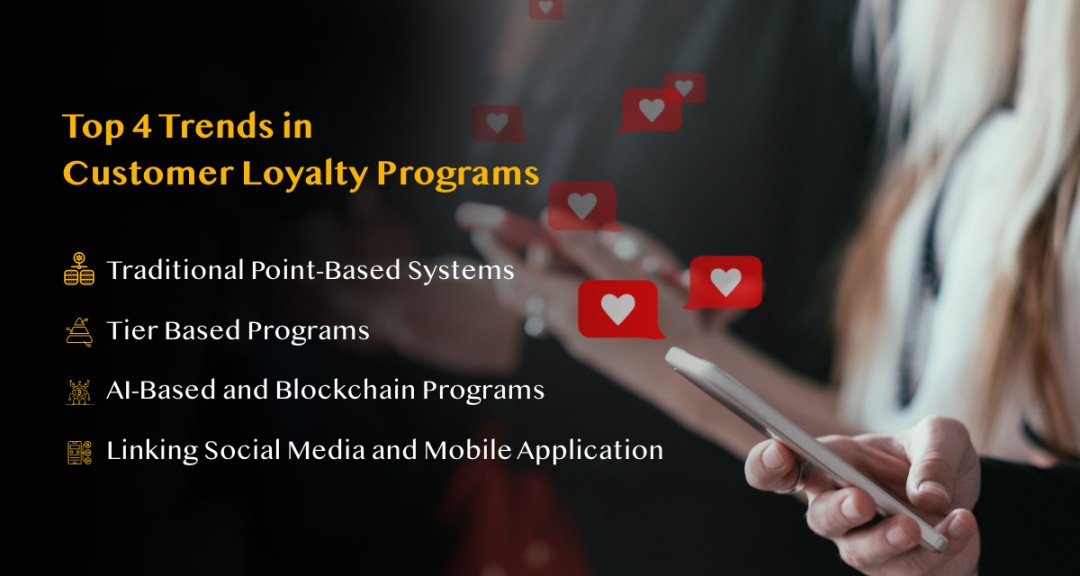
Top 4 Trends in Customer Loyalty Programs Till 2023
2023 is the year businesses adopt major technological upgrades, including the launch of AI that redefined operations and customer support. From offering personalized suggestions to keeping track of past purchases, AI has helped customers and businesses improve customer connection and satisfaction.
The field of customer loyalty programs up to 2023 has seen a dynamic evolution, marked by the continued dominance of traditional strategies and the emergence of innovative technologies. The 2023 loyalty programs review can be summarised below:
1. Traditional Point-Based Systems
Point-based reward systems have been the foundation of customer loyalty programs for years. This conventional method has continued to maintain its appeal despite the emergence of new trends and technologies.
The fundamental principle behind these systems is straightforward: customers accrue points through purchases, which can be exchanged for savings, goods, or services. Although simple in concept, the tangible benefits provided by point-based systems have consistently contributed to enhanced customer retention rates and repeated transactions.
Example: Expedia Rewards
Expedia Rewards can be considered one of the best loyalty programs to understand this. It offers you reward points every time you use it to book a flight ticket. The reward earned might vary based on the membership category, but on average, a savings of $35 can be confirmed on each booking.
2. Tier Based Programs
The second one on the list is the tier system. The idea behind a tiered loyalty program is quite simple. While many consider this the future of customer loyalty programs, various adaptations are still done to enhance customer satisfaction. This adds a layer of sophistication by redefining the way of spending and saving. The idea behind this program is to segment clients based on their buying habits.
Each tier offers progressively generous rewards and perks to motivate individuals to heighten their involvement and expenditure, advancing through the tiers. A well-known illustration is the Starbucks Rewards program, where customers accumulate points for each transaction, which are exchanged for complimentary beverages, meals, and other prizes.
By doing so, these tiered loyalty initiatives successfully encourage recurring patronage while deepening customer allegiance to the brand.
3. AI-Based and Blockchain Programs
According to a study, an overwhelming majority (96%) of millennials are eager for businesses to develop innovative methods of recognizing and rewarding customer loyalty. At the same time, around 75% of customers have expressed their willingness to connect with other brands if the loyalty program offered is better.
Loyalty programs are now better due to the recent advancements in artificial intelligence (AI) and blockchain technology. This is because of the personalization and high-security features offered by them. Using the existing customer information and analyzing the data, AI can now offer customized suggestions and improve the buying experience.
Example: XPLR Pass Loyalty Program
The North Face’s XPLR Pass loyalty program harnesses AI to offer personalized product recommendations, enhancing customer experience. Envisioning blockchain integration, it aims to secure loyalty transactions, ensuring transparency and building trust. This dual-technology approach marks a significant step in evolving customer loyalty strategies.
Integrating AI and blockchain in loyalty programs heightens overall customer experience and establishes a new benchmark for program efficacy and reliability.
4. Linking Social Media and Mobile Application
Integrating social media and mobile applications is not just a trend but a way to move ahead and help businesses establish an omnichannel presence. Leveraging social media platforms to reach the masses by creating engaging campaigns attached to the reward point system has been a great addition.
With the referral programs, the customers are facilitated with the opportunity to invite their friends and family to join the loyalty program via social media or mobile apps. It not only offers reward benefits to customers but also expands the program’s reach and fosters a sense of community.
This kind of amalgamation of social media and mobile technologies within loyalty programs allowed businesses to march towards a more customized and dynamic approach. Such a development in customer loyalty resulted in improved overall satisfaction and created a new pathway for customer loyalty in 2024.
While the loyalty trends in 2024 are going to be more focused on the improvisations of the existing trends, adaptions need to be done based on understanding customer behavior and the existing marketing conditions. From the increasing demand for personalized loyalty programs to ensuring that programs meet ethical considerations, every single aspect needs to be adhered to.
Impact of Customer Behavior on Customer Loyalty Programs
To overcome the challenges and adapt to customer loyalty trends, understanding the impact of customer behavior is important. Various aspects impact this, which are as follows:
- As per McKinsey, 71% of consumers expect personalized experiences, with 76% feeling frustrated when they don’t receive them, making personalization key to better customer service.
- The rise in omnichannel preferences accelerates AI and digital technology integration in loyalty programs.
- Growing environmental consciousness leads to customer preference for sustainability-focused loyalty rewards.
- Diverse customer tastes demand adaptable, multifaceted rewards in loyalty programs.
- Incorporating game-like elements such as point systems and challenges enhances customer engagement.
As customer preferences increasingly lean towards personalized and sustainable options, businesses must intertwine these needs with ethical considerations which will shape the loyalty trends in 2024.
Impact of Ethical Considerations on Customer Loyalty Programs
Technology considerations will drive a wider adoption of customer loyalty in 2024. People welcome the change, but they are equally excited about the ethical implications. As a matter of fact, businesses that give ethical issues a top priority in their loyalty schemes stand to gain from their consumers’ increased trust and enduring connections. Some of the important aspects that should be considered are as follows:
- Ensure loyalty programs align with data protection laws, maintaining secure and responsible consumer data handling.
- Provide complete transparency in loyalty program terms, including point accumulation and usage, to foster customer trust.
- Incorporate eco-friendly and socially responsible options in rewards and incentives, enhancing brand image and appeal.
- Practice ethical standards in loyalty programs to boost consumer trust and improve brand reputation, attracting ethically conscious customers.
- Stay updated and adaptable to changing legal and social norms around data usage and corporate conduct to ensure ongoing ethical compliance.
While ethical considerations are paramount, social media stands as a crucial tool for ethically engaging customers. Right from multiplying the personalized experiences to increasing transparency and trust, ethical consideration covers all aspects needed in the new era.
Impact of Social Media on Customer Loyalty Programs
Social media platforms remain pivotal in fostering customer allegiance. These channels go beyond advertising to construct communities, maintain direct contact with patrons, and provide unique rewards exclusive to social media users. Thus effective social media handling is not only the key to building customers but also building effective customer loyalty programs as follows:
- Leveraging social media for community building around brands to enhance customer loyalty.
- Use social media to get direct and instant feedback and engagement.
- Offer special discounts and early access to products like benefits via social media platforms.
- Personalizing loyalty programs using data from social media interactions for more relevant customer experiences.
- Ensuring ethical and transparent handling of social media data to build trust and maintain customer loyalty.
The landscape of customer loyalty programs in 2024 is going to witness a drastic shift owing to the new trends. From hyper-personalization to gamification-based loyalty programs, these trends are offering an edge to brands for building a sustainable base of customers for the future.
The Emerging Customer Loyalty Trends in 2024
Loyalty programs in 2024 are expected to see a drastic shift toward technology and personalization based on the programs designed in 2023. These programs are expected to offer technology-driven updates with customer focus at the prime. The loyalty programs are going to be at the forefront of the landscape are:
1. Coalition Loyalty Programs
In recent times, businesses have been forming strategic partnerships with complementary brands to broaden their scope and provide customers with additional value through loyalty initiatives which are known as coalition loyalty programs. Such collaboration can strengthen businesses, offer opportunities to access new customer segments, and reinforce customer loyalty.
2. Hyper-Personalization in the Programs
The term “hyper-personalization” in loyalty programs describes how cutting-edge technology, such as artificial intelligence (AI), is used to customize offers and experiences to each customer’s distinct tastes and actions. This strategy goes beyond the conventional one-size-fits-all payouts. It emphasizes customized interaction to raise client happiness and loyalty. With this trend in place, it is projected to expand its active user base to 250 million by 2027, further solidifying its commitment to customer-centric innovation.
3. Personalized Tiers
Personalized tiers in customer loyalty programs mark a shift towards a more individualized approach to customer engagement. By tailoring rewards and benefits to align with each customer’s unique preferences and purchase history, these programs offer a higher degree of relevance and personal value.
This customization enhances the customer experience and fosters deeper brand loyalty and engagement. Such a strategy leverages customer data effectively to create tiers that resonate more personally with members, setting the brand apart in a competitive market and increasing customer satisfaction and retention.
4. Immersive Gamification Experience
According to Snipp, gamification can increase customer engagement by 47%, loyalty by 22%, and brand recognition by 15%. In 2024, customer loyalty programs are expected to see an inclination toward AR and VR technologies for immersive experiences. VR offers immersive rewards, allowing customers to experience unique, engaging scenarios. AR adds an interactive dimension, enhancing loyalty experiences with overlaid information and exclusive content. Together, these technologies create a more dynamic and captivating loyalty environment, deeply engaging customers in a novel and memorable way.
Free Whitepaper-Rising Trends of Gamification in Loyalty Programs!
Dive into Zinrelo’s free whitepaper, Rising Trends of Gamification in Loyalty Programs, to learn everything you need before implementing gamification in the loyalty program for your business.
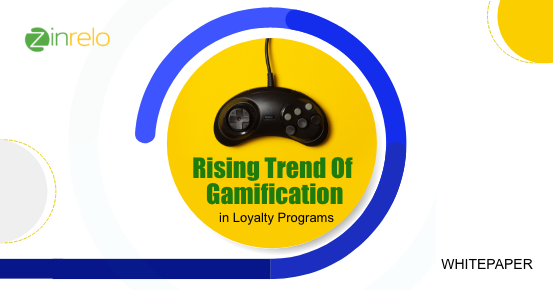
5. Increasing Use of AI
The integration of AI and advanced data analytics significantly enhances loyalty programs, offering personalized experiences for customers. AI’s deep analysis of large data sets enables the creation of bespoke loyalty tiers and rewards aligning perfectly with individual behaviors and preferences. This approach not only strengthens the customer-brand relationship but also allows for the prediction of future needs, facilitating proactive, customized rewards. Consequently, these AI-driven programs elevate the customer experience, ensuring more effective engagement and a substantial increase in customer lifetime value.
6. Loyalty Program Automation
Loyalty Program Automation revolutionizes how loyalty programs operate, automating critical facets like enrollment, point management, and reward redemption. This simplifies program management, personalizes customer experiences, and leverages data analytics to bolster customer retention. Furthermore, brands can launch targeted marketing campaigns to specific customer segments, leading to increased customer engagement.
Seamlessly integrating with existing systems, necessitates initial customization and relies on continuous data analysis for fine-tuning. By boosting operational efficiency and enriching the customer experience, this automation makes loyalty programs more dynamic and impactful.
7. Mobile Wallets
As technology continues to advance and customer preferences shift towards the adoption of digital wallets. Businesses are capitalizing on this trend by incorporating these innovative payment methods into their loyalty program through referrals or point wallets that can be used for purchasing.
8. Sustainability and Green Loyalty
Organizations should prioritize environmentally responsible procedures when running loyalty programs. Businesses that emphasize environmentally friendly projects can develop a reputation for social responsibility and win over customers who care deeply about protecting the environment.
9. Growth of Loyalty Program Communities
The development of community-oriented loyalty programs has gained significant attention. These initiatives aim to establish an environment where customers feel valued and connected by providing unique experiences via digital platforms, such as mobile applications. This is truly the future of loyalty trends in 2024 that will add multiple layers of benefit to businesses.
10. Loyalty Programs Aligned with Several Generations
To gain the edge, considering the tastes and preferences of every generation of customers is now quite crucial for businesses. By doing so, businesses can foster greater customer loyalty and overall satisfaction by tailoring these experiences to meet the unique needs of Generation Z, Millennials, Gen X, and Baby Boomers.
To understand the trends better, let us explore some of the notable examples here.
3 Notable Brands Displaying Innovations in Loyalty Programs
1. Expedia’s One Key Cross-Platforms Program
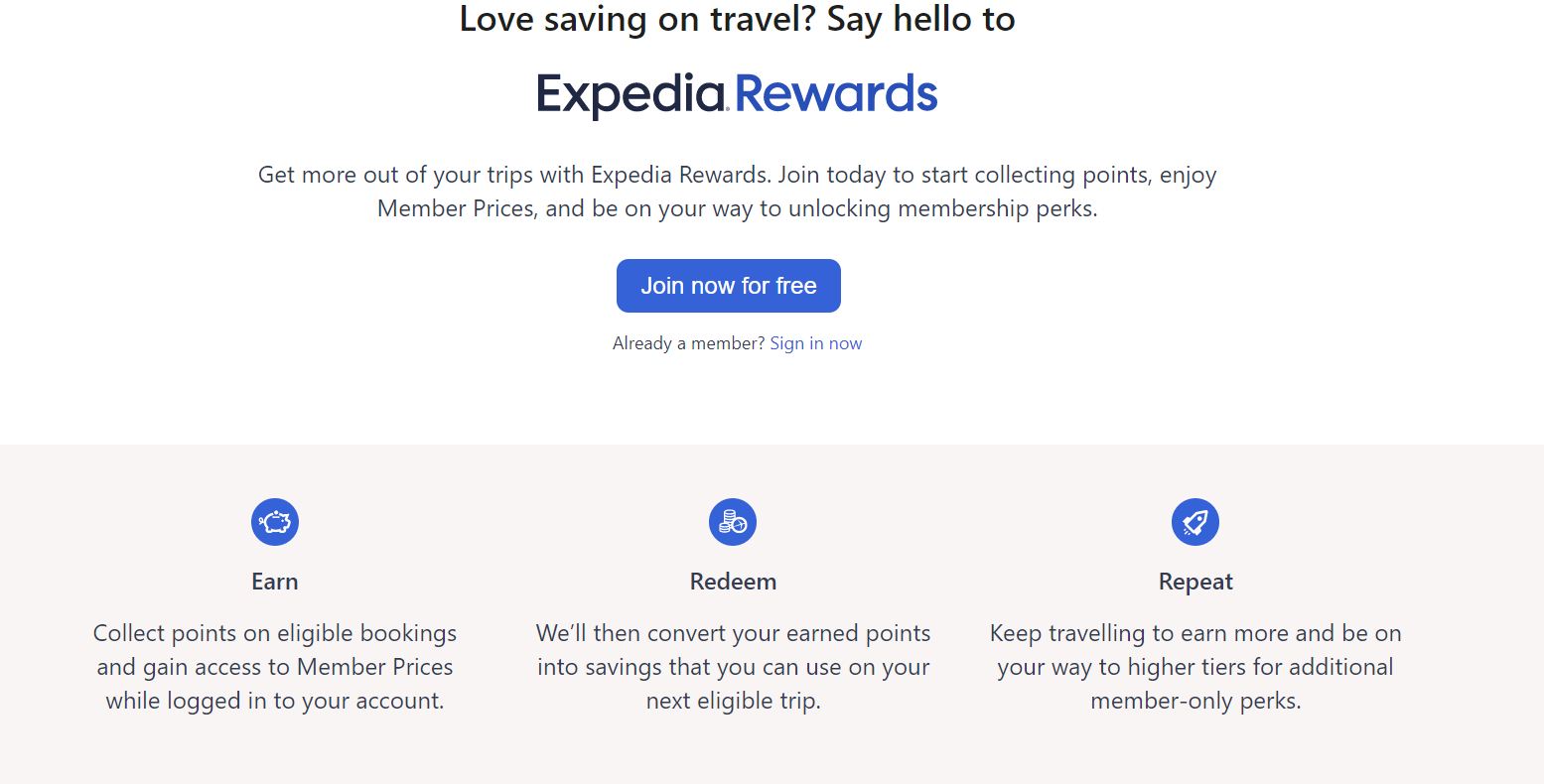
Disclosed in 2023, Expedia’s One Key is a loyalty program that exemplifies user convenience and engagement across its platforms.
Designed to be cross-platform, it allows members to earn points whether they book flights, hotel stays, or vacation rentals. The program’s structure is tiered, with each level offering distinct perks.
For instance, Silver tier members enjoy priority travel support, while those reaching the Platinum tier are rewarded with significant benefits, such as $100 off hotels to mark the launch.
Expedia emphasizes the attainability of its rewards, aiming to include not only frequent travelers but also those who occasionally travel, ensuring a broad appeal and fostering inclusivity within its customer base.
2. Etihad Airways’ Horizon Club’s World of NFTs
Pushing the envelope of digital innovation, Etihad Airways launched the “Horizon Club,” a Web3-based loyalty program that integrates the exciting world of NFTs. This program departs from traditional loyalty schemes by allowing members to collect digital cards commemorating their trips. Completing a collection unlocks exclusive rewards, ranging from vouchers for business lounge access to free airline miles and status upgrades.
Etihad has tailored this new approach to create a unique experience for travelers. The program rewards them for their patronage and engagement with the brand in the burgeoning space of digital collectibles. It is pioneering in leveraging blockchain technology to enhance customer loyalty and provide a novel way to recognize and reward its passengers.
3. Panera’s Loyalty Program’s Biometrics Feature
Panera Bread is pioneering customer convenience by incorporating Amazon One’s palm vein biometrics into its MyPanera loyalty program. Initially implemented in two St. Louis area cafes, Panera plans to expand this technology to more locations soon. This innovative system allows customers to link their MyPanera account to their unique palm signature. Which, in turn, enables quick and secure access to loyalty rewards and streamlined transactions.
This integration of biometric technology signifies Panera’s commitment to enhancing the customer experience through advanced, secure solutions. The palm vein system not only expedites the checkout process but also provides a personalized and efficient way for customers to engage with the MyPanera program, exemplifying a forward-thinking approach in the retail and hospitality sector.
Customer loyalty trends in 2024 are an indication of the start of an era where loyalty programs will be a perfect combination of not only personalization but also technological upgrades to offer satisfaction and increased engagement. While this is the upside, there are a few challenges that might act as roadblocks in the development of the programs.
Customer Loyalty Program Challenges in 2024
Where technology has been a benefit for businesses, there has been the other side full of challenges in the adoption of the same. The same aspect is true for the customer loyalty trends. Though AI and linked technologies are setting up the loyalty trends for 2024, businesses have faced certain challenges as well, which are:
- Balancing cost and benefit for integrating AI, blockchain, and IoT in loyalty programs.
- Developing user-friendly interfaces and educating customers for smooth loyalty program adoption.
- Investing in data management and analysis tools for handling large volumes of loyalty program data.
- Navigating cookie usage restrictions to personalize loyalty programs while adhering to privacy standards.
- Integrating AI-backed chatbots to maintain human interaction in increasingly technology-driven loyalty programs.
- Adjusting loyalty programs to meet evolving customer expectations with effective communication and alignment.
Indeed, a balance between technology-driven loyalty programs and human touch is a must to ensure that customer engagement not only increases but the brands build a positive image in the everchanging era.
Conclusion
The evolving landscape of customer loyalty and rewards programs in 2023 is defined by technology and personalization which is further going to upgrade in 2024. An important development is the transition from conventional point-based systems to blockchain integration and AI, as well as the usage of social media and mobile applications. These advancements, driven by customer demand for more tailored and engaging interactions, are set to evolve loyalty programs further.
This evolution, propelled by customer demand for tailored and immersive experiences, is where companies like Zinrelo are making a significant impact. Zinrelo’s approach to aligning with these trends is pivotal, potentially leading to more customized, secure, and engaging loyalty programs that enhance customer loyalty in the long run. This evolution will undoubtedly shape the future landscape of customer loyalty trends in 2024.
Key Takeaways and Action Items
Enhancing customer loyalty is crucial for long-term business success. Key strategies include understanding customer needs, personalizing experiences, providing exceptional service, developing innovative loyalty programs, engaging effectively, and adapting to market changes. These approaches aim to transform customers into brand advocates, underscoring the importance of customer loyalty.
- Deep Customer Understanding: Focus on deeply understanding and anticipating customer needs to build loyalty.
- Personalized Customer Experiences: Tailor experiences to individual preferences, enhancing satisfaction and loyalty.
- Exceptional Service Delivery: Go beyond expectations in customer service to create memorable and positive experiences.
- Value Proposition and Innovation: Develop a unique value proposition and continuously innovate loyalty initiatives to stay competitive.
- Engagement and Feedback Utilization: Maintain consistent engagement with customers and actively use their feedback for improvements.
- Adaptability to Market Changes: Stay agile and adaptable to market shifts and evolving customer preferences.
The Only Loyalty Program Guide You Will Ever Need!
Dive into Zinrelo’s in-depth free customer loyalty program guide and learn everything you need before building a modern-day loyalty program for your business.

